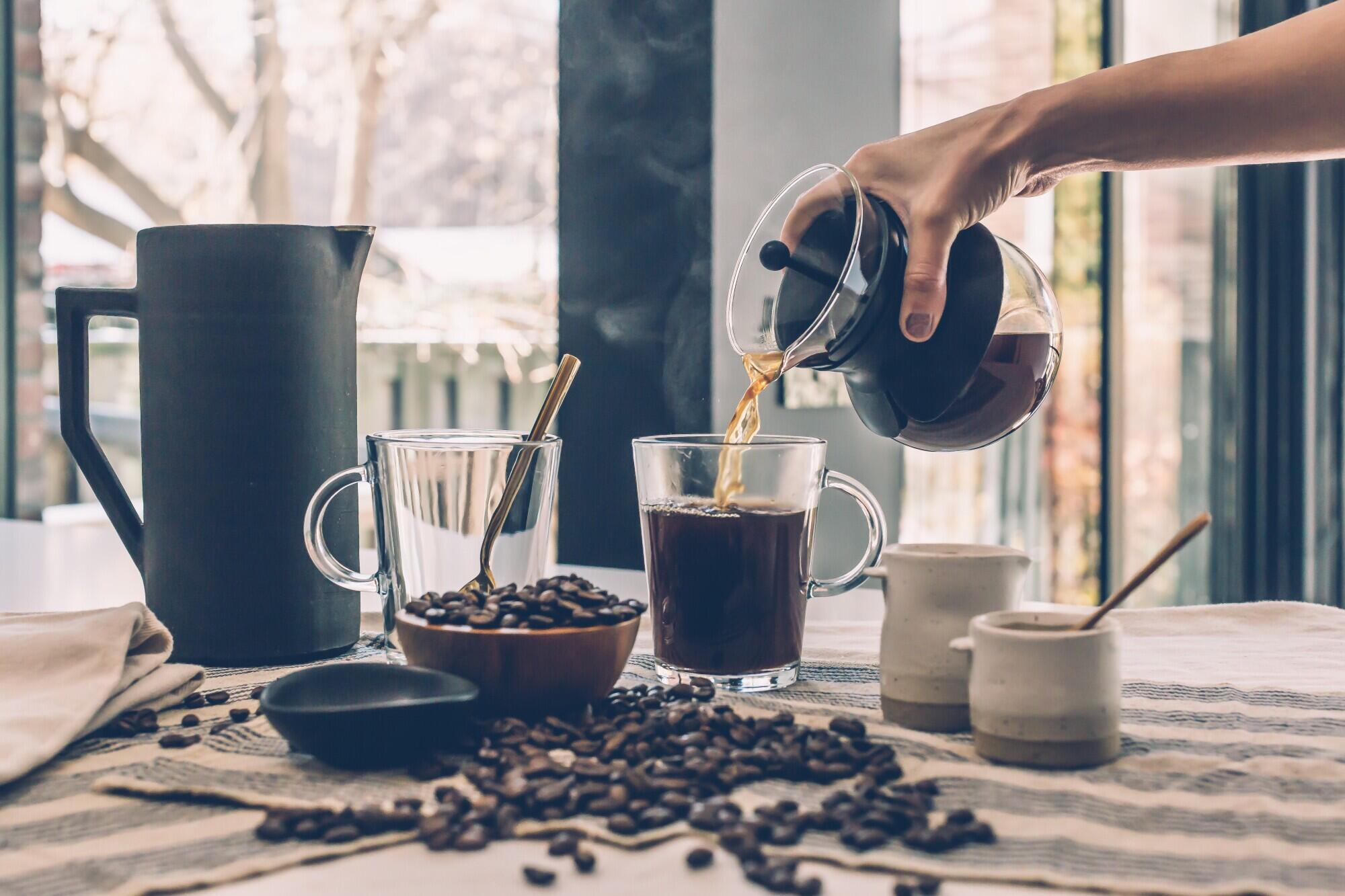Espresso Beans vs. Coffee Beans: What's the Difference?
Have you ever stood in front of an assortment of coffee beans at your local cafe, wondering about the difference between espresso and regular coffee beans?
If you're curious about America's favorite beverage, we're about to discuss the espresso beans vs. coffee beans debate.
Trust us, it's a journey that will leave you thirsty for more (of both!). So, grab your favorite mug and explore the nuances that make these beans unique.
Espresso Beans vs. Coffee Beans: It's All in How You Roast Them
The distinction between espresso and coffee beans lies in their roasting process rather than the beans themselves. With this foundation, we can further explore the intricate details influencing the taste, texture, and coffee experience.
The Roasting Process Defined
At their core, espresso and regular coffee beans are the same - they both start as fresh green coffee beans from coffee plant crops.
The pivotal difference arises when roasting and preparing them for brewing. The roasting process applies high heat to the raw beans, triggering chemical reactions that develop their unique flavors, aromas, and oils.
Roast Levels and Flavors
Roast levels can range from light to dark, with roasting impacting a coffee bean's taste profile. Lighter roasts showcase the beans' original flavors, like fruity or floral notes.
As you move into medium and darker roasts, the beans develop more decadent, nuttier, and more caramelized flavors from the roasting itself.
Dark Roasts for Espresso
The beans need a much darker roast than typical coffee beans to achieve espresso's signature bold, intense taste.
This extended roasting time allows the natural sugars to caramelize and the bean's oils to become very pronounced. These dark, oily beans are vital for extracting a thick espresso shot with cream.
What Are Espresso Beans?
Espresso beans are a specific blend of dark-roasted coffee beans with unique flavor characteristics. Baristas use these beans to make espresso and other coffee drinks like lattes, cappuccinos, and macchiatos.
The key to achieving the perfect espresso shot is balancing the beans, the grind, and the brewing method. This delicate equilibrium ensures that every sip delivers a rich, complex, and satisfying coffee experience, illuminating the art and science behind your morning cup.
Roast Level for Espresso Beans
As mentioned earlier, making espresso requires a dark roast to achieve its unique flavor profile.
However, the roasting level can also affect how well the beans perform in an espresso machine. A lighter roast may produce a less intense shot that is easier to extract. A darker roast may be more challenging to brew but can create a richer flavor.
Grinding for Espresso
Achieving the perfect espresso shot relies on the grind size of the beans.
Espresso requires an ultra-fine, powdery grind that looks like granulated sugar. This exposes the largest potential surface area of the coffee grounds for extraction.
A consistent, even grind is also crucial - any larger particles can disrupt the flow of water and pressure during brewing.
Brewing Espresso
Espresso machines brew the finely ground espresso beans using an exact process. The true magic occurs in the pressure. The espresso machine doses the packed grounds with hot water between 195-205°F.
Espresso machines pump water through the grounds at 9-15 bars of pressure, which is higher than other brewing methods. This intense pressure extracts all the flavorful oils and essences into a syrupy shot in 20-30 seconds.
Popular Espresso Varieties
While many believe any bean can work for espresso, people prize certain varieties for producing outstanding espresso shots.
Some favorites include the bright, fruity notes of Ethiopian Yirgacheffe, Sumatra's chocolatey low notes, and Brazilian beans' caramel sweetness. Blending robusta varieties gives the coffee a deeper, earthier flavor and a caffeine kick.
What Are Coffee Beans?
Coffee beans are the raw green seeds of the coffee plant that undergo roasting to develop their unique flavors and aromas. They come from various cultivars and growing regions around the world. You can roast them at many levels to achieve a wide range of taste profiles in the final brew.
Coffee Roast Profiles
While espresso relies on a very dark roast, coffee beans offer a broad spectrum of roast levels from light to dark, each unlocking distinct flavors.
The lightest roasts in the Light City to City range have a brighter, fruitier acidity and pronounced origin flavors. As the Maillard reactions kick in, medium roasts like City+ to Full City bring out more balanced caramel, chocolate, and toastiness notes. The darkest roasts become richer and smokier and can take on an oily surface like espresso beans.
Brewing Coffee
In contrast to espresso's intense, pressurized brewing, people typically brew coffee beans using slower, gentler extraction methods like pour-over, French press, or drip.
These techniques highlight coffee beans' nuanced, delicate origin flavors and mouthfeel rather than maximizing extraction like espresso's high pressure. You can customize water temperature, turbulence, agitation, and steep times to your personal taste.
Coffee Plant Varieties
The two most common species of coffee plants are Arabica and Robusta. Coffee producers worldwide prize Arabica beans for their complex, fruity flavors, as they make up about 60% of the world's coffee production. Cheaper blends or instant coffee often use Robusta beans, which taste more bitter and earthy.
There are many popular coffee varieties from different regions worldwide, each with its unique flavor profile. Some favorites include Colombian beans' chocolatey, nutty notes and Guatemalan citrusy, bright flavors.
Coffee enthusiasts also highly value Hawaiian Kona beans for their smooth, somewhat acidic taste and limited availability.
The Verdict
So, the espresso beans vs. coffee beans debate isn't a competition. Both have unique strengths and a range of flavors and brewing methods.
If you want the freshest, most flavorful espresso beans or coffee beans, look to Time for Caffe. Our online store offers a wide selection of premium beans roasted and shipped on the same day, ensuring the greatest freshness and flavor.
Keep exploring different beans, roasts, and brewing methods--who knows what delicious discoveries await? Contact us to learn how to get fresh-roasted coffee and expresso beans straight from the farm and bring them to your home.

